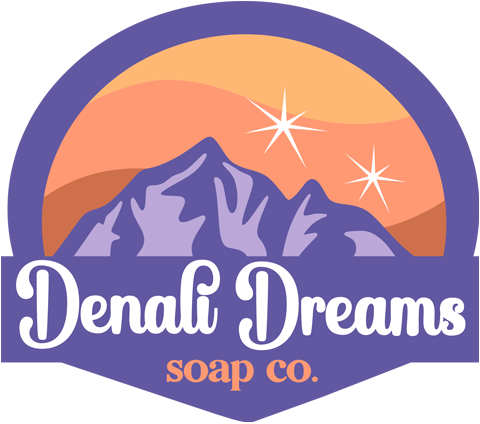It is the combination of fats and oils (acids) mixed with sodium hydroxide or potassium hydroxide (bases) to produce a substance that cleans. Soap helps to break surface tension of the water which allows the water to cover more area making water wetter. Soap molecules called micelles have a hydrophobic (water repelling) tail and a hydrophilic (water attracting) head. The head is what makes water wetter and allows germs to wash off easier. While the tails because they repel water, they are attracted to dirt, germs and bacteria on your hands. They collect these unwanted substances and bring them inside the soap molecule, until we are ready to wash them down the drain.
Commercial soaps are traditionally stripped of their moisturizing component, glycerin. Glycerin is the by-product of soap making and is what attracts moisture to your skin. Handcrafted soaps typically still contain their glycerin (Ours sure does!) which helps your skin to attract moisture.
We always strive to include the best ingredients in our products If an organic option is available we do our best to use it, but unfortunately not everything is organic. We use local ingredients whenever we can. We ensure that the suppliers we work with are providing a high quality product, which is free of animal testing and are sustainable.
We make soap using the cold process method. We start by melting fats and oils together, and mixing water and sodium hydroxide. When each mixture is the correct temperature, we mix them together. In the beginning, the mixture will have the consistency of olive oil and have a translucent appearance, but when the soap starts to saponify (to become soap) the consistency will thicken and become opaque. Right before we pour into the molds, the scent and colorants are added. After being poured, the soaps sits for two days before being cut. During this process, we cut groom and stamp the soaps. After grooming, the soap must sit for an entire month before it can be used, this process is called the curing stage. In this stage 20% of the water weight evaporates from the soap, making it a bar harder so it will last longer. The finished bar of soap gets hand wrapped and shipped to a store or to your door!
Lye soap was made before we knew how to calculate how much lye was needed to saponify (the chemical reaction where oil and lye combine to make soap) with each oil. Each oil has a different amount of lye needed to make a soap molecule. Most of the time the recipe was a guess of how much of each oil and lye was needed. Lots of times there was too much lye in the recipe, hence the name Lye Soap (made for great laundry soap, but not great for your skin). Now when soap is made we have calculators and formulas to help ensure that there is just enough lye and oils to make the perfect bar of soap.
Forget-Me-Not Soap
Forget-Me-Not Bath Bomb
Alaska Winter Soap
Alaska Winter Salve
Cabin Fever Reliever
Aurora Soap
Bear Naked Lavender-Cedarwood Bar
Shampoo Lavender, Rosemary and Clary Sage Bar
Bath and Body Oil Lavender
Bath and Body Oil Boreal Nights
Butter Bear Lotion Bar
Goat Milk Lavender-Patchouli Soap
Klondike Kate Complexion Bar
Klondike Kate Bodacious Balm

